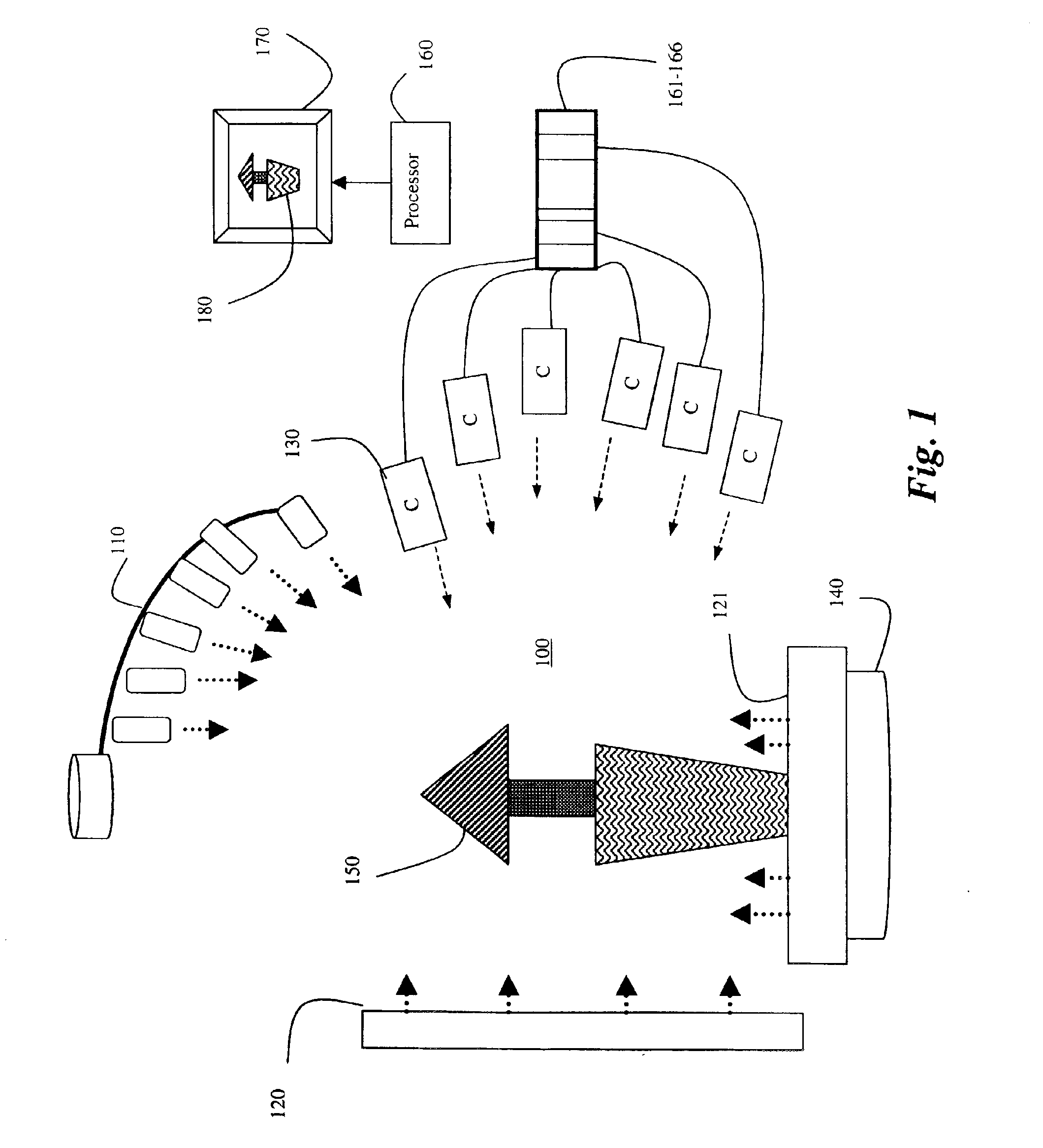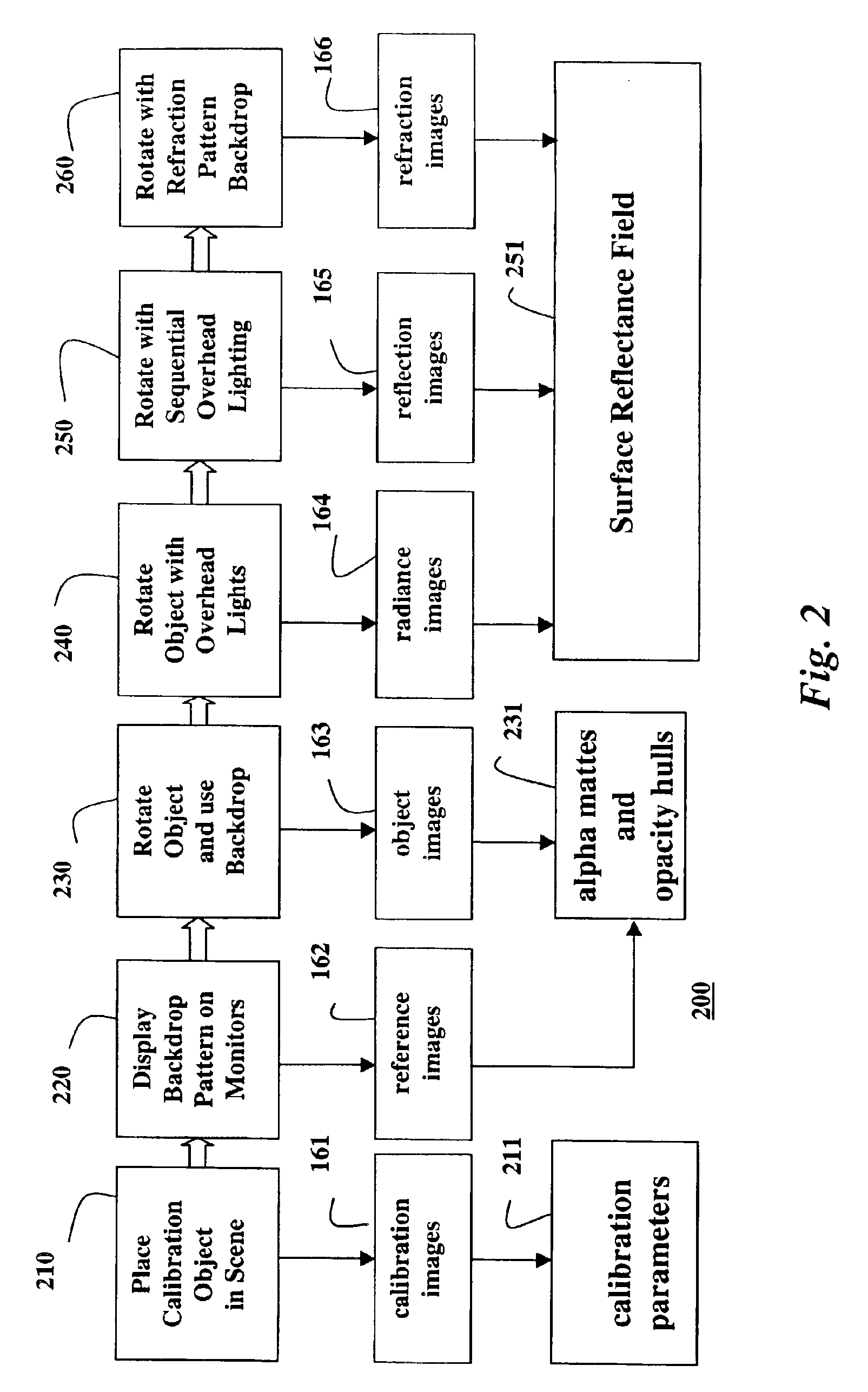Image-based 3D modeling rendering system
a 3d modeling and rendering system technology, applied in the field of computer graphics, can solve the problems of time-consuming and labor-intensive 3d modeling, inability to replicate the geometry and appearance of complex objects using prior art parametric reflectance models, and many practical applications, and achieves the effects of accurate composited into synthetic scenes, simple set-up and calibration, and convenient us
- Summary
- Abstract
- Description
- Claims
- Application Information
AI Technical Summary
Benefits of technology
Problems solved by technology
Method used
Image
Examples
Embodiment Construction
System Structure
[0034]FIG. 1 shows a system 100 for modeling and rendering a 3D object 150 according to the invention. The system 100 includes an array of directional overhead lights 110, a multi-color backlight 120 and a multi-color bottomlight 121, cameras 130, and a turntable 140. The output of the cameras 130, i.e., sets of images 161-166, is connected to a processor 160. The processor 160 can be connected to an output device 170 for rendering an acquired model 180 into arbitrary realistic scenes. It should be noted that either the cameras 130 or turntable can be rotated 140 to image the object from multiple viewpoints. The rotation provides coherence of sampled surface points.
[0035]The array of overhead lights 110 can be rotated. The lights are spaced roughly equally along elevation angles of a hemisphere. During object imaging, the overhead lights can be fixed, rotate around an object for a fixed point of view, or made to rotate with the object. The light array 110 can hold fo...
PUM
 Login to View More
Login to View More Abstract
Description
Claims
Application Information
 Login to View More
Login to View More - R&D
- Intellectual Property
- Life Sciences
- Materials
- Tech Scout
- Unparalleled Data Quality
- Higher Quality Content
- 60% Fewer Hallucinations
Browse by: Latest US Patents, China's latest patents, Technical Efficacy Thesaurus, Application Domain, Technology Topic, Popular Technical Reports.
© 2025 PatSnap. All rights reserved.Legal|Privacy policy|Modern Slavery Act Transparency Statement|Sitemap|About US| Contact US: help@patsnap.com



